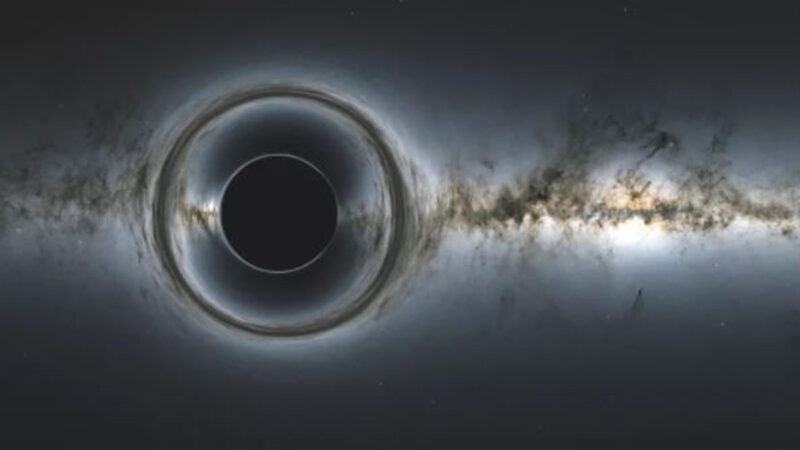[New Tang Dynasty Beijing time July 30, 2021]Scientists have detected light from behind a black hole for the first time in history. Recently, when astronomers peered into a black hole about 800 million light-years away, they saw something they had never seen before: X-rays reflected from behind the black hole, or “echo”, which proved once again. Einstein’s prediction.
According to a research report published in the British journal Nature on Wednesday (28th), a research team led by astrophysicist Dan Wilkins of Stanford University in California passed through Europe The XMM-Newton satellite of the Space Agency (ESA) and the NuSTAR space telescope of the National Aeronautics and Space Administration (NASA) observed the light from behind the black hole.
According to an ESA statement, this black hole has a mass 10 million times that of the sun and is located at the center of the “I Zwicky 1” galaxy 800 million light-years away.
Wilkins said in a statement: “Any light that enters the black hole will not come out, so we should not see anything behind the black hole. We can see because the black hole is distorting space. , Bend the light and distort the magnetic field around itself.”
More than a century ago, the famous scientist Albert Einstein predicted that the gravitational pull of black holes was so strong that it would bend light around them. This finding confirms that Einstein’s theory is correct.
By virtue of its huge gravitational force, anything that is too close to a black hole is sucked in, and even light cannot escape its clutches. Surrounding these giants of the universe is an accretion disk. The friction in the disk causes the gas to spiral down gradually and be accretioned to black holes or stars. The gravitational field causes the matter to be compressed and at the same time stimulates electromagnetic radiation.
When matter is sucked into the black hole, it releases a beam of superheated particles called the corona, which emits X-ray flares. X-ray flares bounce off the back of the thermal accretion disk of the black hole, producing a reflection called “echo”.
The research team detected faint X-ray bursts with different wavelengths than larger X-rays, suggesting that they bounced off the accretion disk behind the black hole. This happens when some X-rays manage to escape the huge gravitational pull of the black hole, but they are only sucked back. Some of the escaped X-rays are reflected from the back of the accretion disk and bend under the strong gravitational force of the black hole. It is this phenomenon that allows Dr. Wilkins and his team to detect these X-ray “echoes” from the other side.
Dr. Wilkins said: “For several years, I have been building theoretical predictions of how these echoes will appear in front of us. I have predicted them theoretically, so once I see them in telescope observations, I can make them. Know the connection.”
Michael Cowley, an astrophysicist at Queensland University of Technology who was not involved in the study, said that this discovery not only provides further support for Einstein’s general theory of relativity, but also helps astronomy Better understand supermassive black holes.
According to the team’s statement, after this breakthrough research, the team’s goal is to create a three-dimensional map of the surrounding environment of the black hole. They hope to better understand the black hole corona and explore how the black hole corona produces these bright X-ray flares.
(Comprehensive report by reporter Li Zhaoxi/Editor in charge: Zhang Jie)
The URL of this article: https://www.ntdtv.com/b5/2021/07/30/a103178146.html
